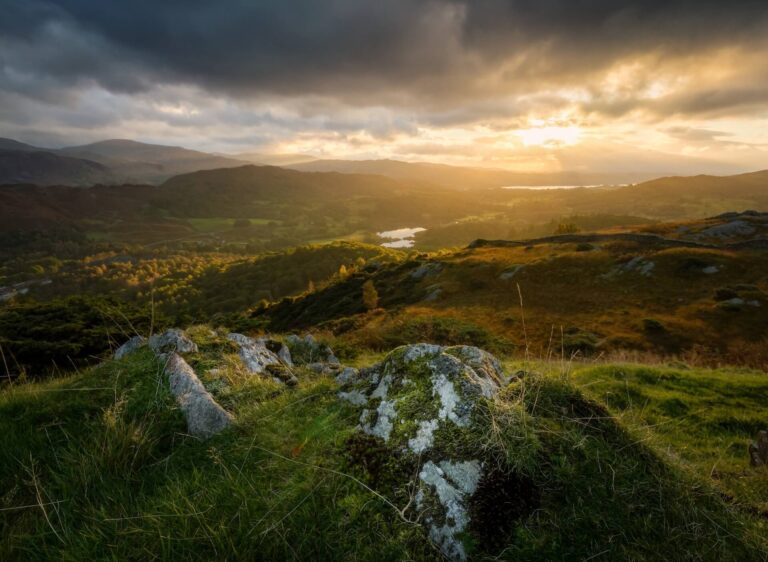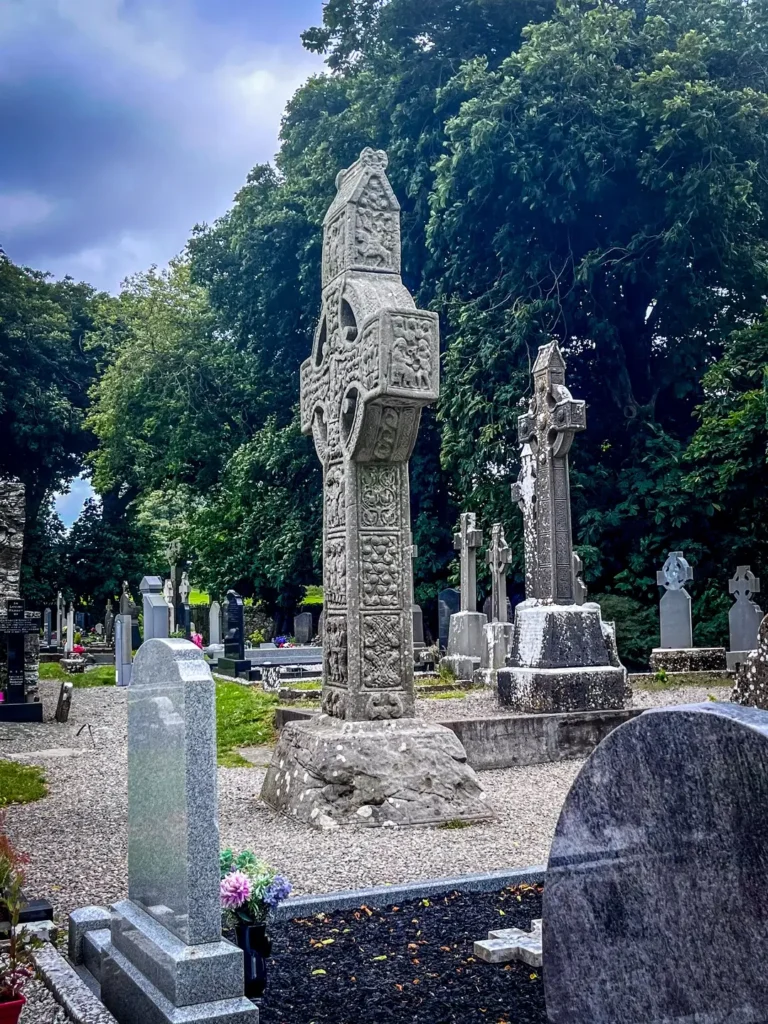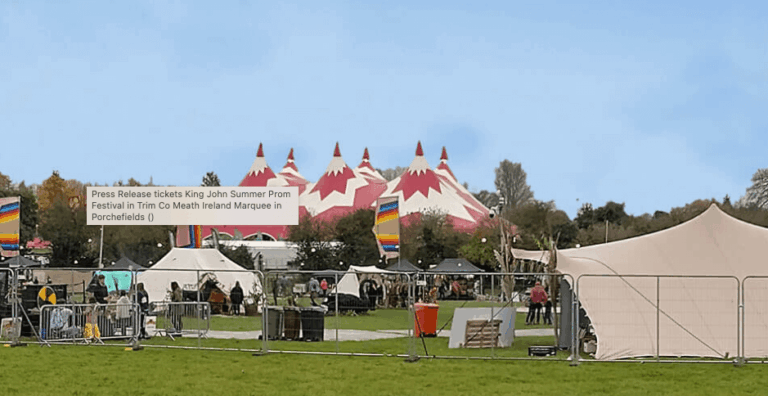Boyne Valley Weather and When to Go
Planning a trip to Boyne Valley? Knowing what kind of weather to expect can really make or break your visit. This area has its own unique climate patterns, and they change a lot throughout the year. We’ll go over what each season typically brings, from sunny days to chilly ones, so you can pack smart and pick the best time for your adventure. We’ve got some good boyne valley weather tips for you.
Key Takeaways
- Boyne Valley weather changes a lot, so check the forecast right before you go.
- Summer is warm and good for outside stuff, but can have some rain.
- Fall brings cooler air and nice colors, but also more wind.
- Winter gets cold and snowy, so dress really warm if you visit then.
- Spring is a mix of everything, with things warming up but still some wet days.
Understanding Boyne Valley Weather Patterns
Typical Seasonal Conditions
The Boyne Valley experiences a temperate climate, meaning it doesn’t usually get extremely hot or cold. However, the weather can be quite variable, so it’s good to be prepared for anything. Summers are generally mild and pleasant, while winters can be chilly and damp. Spring and autumn offer transitional weather, with their own unique charm and challenges.
- Spring (March – May): Temperatures gradually increase, with frequent rainfall. Expect blossoming landscapes and longer daylight hours.
- Summer (June – August): Warmest months, with average temperatures in the high teens to low twenties (Celsius). Occasional heatwaves can occur.
- Autumn (September – November): Temperatures cool down, and rainfall increases. The landscape transforms with vibrant fall colors.
- Winter (December – February): Coldest months, with temperatures often near freezing. Expect rain, sleet, and occasional snowfall.
Daily Temperature Fluctuations
Daily temperature swings in the Boyne Valley aren’t usually extreme, but they can be noticeable, especially during spring and autumn. Coastal areas tend to have less fluctuation than inland areas. It’s not uncommon to experience a 10-15 degree Celsius difference between the daytime high and nighttime low. This means layering is key, no matter what time of year you visit. You might start the day needing a jacket and end up in short sleeves by the afternoon. Keep an eye on the local forecasts to stay ahead of the changes.
Precipitation Trends
Rainfall is a common occurrence in the Boyne Valley throughout the year. The region doesn’t have a distinct dry season, but some months are wetter than others. Here’s a general overview:
- Consistent Rainfall: The Boyne Valley experiences rain throughout the year.
- Autumn and Winter Peaks: Rainfall tends to be highest during the autumn and winter months.
- Summer Showers: Summer brings shorter, less frequent showers, often interspersed with sunny spells.
It’s always a good idea to pack rain gear, regardless of when you’re visiting. Even in the summer, a sudden downpour can catch you off guard. The unpredictable nature of the weather is part of the Irish experience!
Optimal Times for Visiting Boyne Valley
Best Months for Outdoor Activities
If you’re planning a trip to the Boyne Valley and hoping to spend a lot of time outdoors, you’ll want to aim for late spring or early summer. June and July generally offer the most pleasant weather, with warmer temperatures and longer daylight hours. This is ideal for exploring historical sites, hiking, and enjoying the natural beauty of the area. The weather today, July 12, 2025, in Boyne Valley Provincial Park is 25°C, so it’s a great time to visit!
Avoiding Peak Crowds
While summer offers the best weather, it also brings the largest crowds. If you prefer a quieter experience, consider visiting in the shoulder seasons – late spring (April-May) or early autumn (September-October). You’ll still find decent weather, but with fewer tourists vying for space at popular attractions. Plus, you might find better deals on accommodations and luxury chauffeur services.
Considerations for Shoulder Seasons
Visiting during the shoulder seasons requires a bit more flexibility and preparation. The weather can be unpredictable, with occasional rain showers and cooler temperatures. However, the benefits of fewer crowds and potentially lower prices can outweigh these drawbacks. Here’s what to keep in mind:
- Pack layers to adapt to changing temperatures.
- Check the forecast regularly before and during your trip.
- Be prepared for some attractions to have limited hours or be closed altogether.
The shoulder seasons offer a unique opportunity to experience the Boyne Valley in a more intimate and authentic way. While the weather might not be perfect, the reduced crowds and the chance to see the landscape in a different light can make for a memorable trip. You can check the 7 day forecast to plan accordingly.
Summer Weather in Boyne Valley
Average Summer Temperatures
Summer in the Boyne Valley is generally pleasant, making it a popular time to visit. Expect average daytime temperatures to range from 15°C to 22°C (59°F to 72°F). July and August are typically the warmest months. Evenings can be cooler, so packing layers is still a good idea. I remember one summer, we had a heatwave and it hit 27°C! That’s pretty rare, though.
Summer Precipitation and Humidity
While summer is the driest season in the Boyne Valley, rain is still possible. You might experience scattered showers, but prolonged periods of heavy rain are less common than in other seasons. Humidity levels are usually moderate, making for comfortable conditions for outdoor activities. I always bring a light rain jacket, just in case. You never know when a quick shower might pop up. It’s Ireland, after all!
UV Index Information
The UV index in the Boyne Valley during the summer months can range from moderate to high. It’s important to protect your skin, especially during peak hours (11 AM to 3 PM). Here’s what I usually do:
- Apply sunscreen with a high SPF.
- Wear a hat and sunglasses.
- Seek shade when possible.
Even on cloudy days, UV rays can still penetrate, so don’t skip the sunscreen! I learned that the hard way after a day of exploring Newgrange. My face was so red, I looked like a tomato. Now, I’m religious about sun protection.
It’s worth noting that summer is the best time to visit Ireland for good weather, offering relatively mild temperatures.
Autumn Weather in Boyne Valley
Autumn in the Boyne Valley is a season of transition, bringing cooler temperatures and changing landscapes. The vibrant greens of summer give way to stunning displays of red, orange, and yellow foliage, making it a picturesque time to visit. However, it’s also a period of increased rainfall and variable weather conditions.
Fall Temperature Ranges
During the fall months (September, October, and November), temperatures in the Boyne Valley gradually decrease. September often sees pleasant daytime temperatures, while November can bring chilly conditions, especially in the evenings. Expect average daytime highs to range from the mid-teens Celsius in September to single digits by November. Nighttime temperatures can drop close to freezing, so packing layers is a must.
Autumnal Precipitation
Autumn tends to be wetter than summer in the Boyne Valley. Rainfall increases as the season progresses, with November typically being the wettest month. Expect frequent showers and occasional longer periods of rain. It’s a good idea to pack waterproof clothing and footwear if you’re planning outdoor activities. Here’s a rough idea of what to expect:
- September: Moderate rainfall, with showers occurring every few days.
- October: Increased rainfall, with more frequent and heavier showers.
- November: Highest rainfall, with prolonged periods of wet weather.
Wind Conditions in Fall
Wind speeds in the Boyne Valley can pick up during the autumn months. While strong gales are not common, blustery conditions can occur, especially in exposed areas. These winds can make it feel colder, so be sure to factor that into your clothing choices. Keep in mind that spring and autumn offer unique experiences, so plan accordingly.
Autumn in the Boyne Valley is a beautiful time, but it’s important to be prepared for the changing weather. Pack layers, waterproof gear, and be ready for cooler temperatures and increased rainfall. Monitoring local forecasts will help you make the most of your visit.
Winter Weather in Boyne Valley
Winter in the Boyne Valley can be a mixed bag, so it’s good to know what to expect. You might get beautiful, crisp days, but you should also prepare for some potentially harsh conditions. It’s definitely the quietest time of year, so if you’re looking to avoid crowds, this could be a plus. Just make sure you pack accordingly!
Typical Winter Temperatures
Winter temperatures in the Boyne Valley usually hover around freezing. Expect average daytime highs of around 5°C (41°F) and nighttime lows that can dip below 0°C (32°F). It’s not uncommon to see temperatures drop even further during cold snaps. Keep an eye on the forecast, as these temperatures are just averages, and things can change quickly.
Snowfall and Ice Conditions
Snowfall is variable in the Boyne Valley. Some winters bring heavy snow, while others see very little. Ice is a more consistent concern, especially on roads and walkways. Black ice can be particularly dangerous, so take extra care when driving or walking. Here’s a general idea of what to expect:
- Snowfall: Variable, ranging from light dustings to significant accumulations.
- Ice: Common, especially in the mornings and evenings.
- Road Conditions: Can be hazardous; check local reports before traveling.
Winter Wind Chill
Even if the temperature isn’t extremely low, the wind chill can make it feel much colder. The Boyne Valley is relatively flat, so it’s exposed to wind. This can make outdoor activities less pleasant, and it increases the risk of hypothermia. When planning Ireland travel tips for winter, consider these points:
- Check the wind chill factor in the forecast.
- Dress in layers to trap heat and protect against the wind.
- Limit your time outdoors during very cold and windy conditions.
Winter in the Boyne Valley can be beautiful, but it requires preparation. Be sure to monitor the weather forecast and pack appropriate clothing to stay safe and comfortable.
Spring Weather in Boyne Valley
Spring in the Boyne Valley is a season of transition, bringing a welcome change from the colder winter months. It’s a time when the landscape awakens, and outdoor activities become more appealing. However, it’s also a period of unpredictable weather, so being prepared for a variety of conditions is key.
Spring Temperature Progression
Early spring (March) often sees average temperatures hovering between 3°C and 8°C (37°F and 46°F). There can still be some chilly days and even the occasional frost overnight. As April arrives, temperatures gradually climb, typically ranging from 6°C to 12°C (43°F to 54°F). By May, the Boyne Valley enjoys milder weather, with average temperatures between 9°C and 16°C (48°F and 61°F). This warming trend makes May a particularly pleasant time to visit.
Rainfall in Spring
Spring in the Boyne Valley tends to be quite wet. March can still experience some lingering winter precipitation, but as the season progresses, rain becomes more common than snow. April and May are typically the wettest months, with frequent showers and occasional longer periods of rain. It’s a good idea to pack waterproof clothing and footwear if you’re planning outdoor activities during this time. Here’s a rough idea of what to expect:
- March: Moderate rainfall, some chance of snow early in the month.
- April: High rainfall, frequent showers.
- May: High rainfall, occasional longer periods of rain.
Thawing Conditions
Following the winter months, spring brings a gradual thaw to the Boyne Valley. This can affect ground conditions, especially in rural areas and at historical sites. Fields and paths may be muddy, and some areas could be waterlogged. It’s important to wear appropriate footwear if you’re planning to explore the outdoors. The thawing process also contributes to the lush greenery that characterizes the Boyne Valley in spring. Keep an eye on the Boyne Mountain forecast to plan your trip.
The thawing conditions can also impact some of the historical sites, so it’s always a good idea to check with the local tourism office to see if there are any closures or restrictions in place due to weather-related issues. This is especially true for sites with outdoor access or uneven terrain.
Preparing for Boyne Valley Weather
Essential Packing for Each Season
Packing for the Boyne Valley requires some thought because the weather can change quickly. Having the right clothes can make or break your trip. Here’s a quick rundown:
- Spring: Layers are your friend. Think light jackets, sweaters, and waterproof outerwear. Don’t forget comfortable walking shoes for exploring after the thawing conditions.
- Summer: Pack light, breathable clothing. Sunscreen, a hat, and sunglasses are a must. Evenings can be cool, so bring a light jacket or sweater.
- Autumn: Similar to spring, layers are key. A waterproof jacket is still a good idea, and you might want to add a scarf and gloves as it gets colder. Sturdy shoes are important for walking on potentially wet leaves.
- Winter: Warm, waterproof clothing is essential. A heavy coat, hat, gloves, and scarf are non-negotiable. Waterproof boots with good traction are also a must for navigating icy conditions.
Monitoring Local Forecasts
Before and during your trip, keep an eye on local weather forecasts. There are many reliable sources online, including the hourly forecast from Environment Canada, which provides detailed, up-to-date information. Checking the forecast daily will help you plan your activities and pack accordingly. It’s also a good idea to be aware of any weather alerts or warnings issued for the area.
Safety Tips for Varying Conditions
Boyne Valley weather can be unpredictable, so it’s important to be prepared for anything. Here are a few safety tips:
- Be aware of changing conditions: Weather can change rapidly, so pay attention to the sky and be prepared to adjust your plans.
- Dress in layers: This allows you to easily adjust to changing temperatures.
- Stay hydrated: Drink plenty of water, especially during warmer months or when engaging in outdoor activities.
- Wear appropriate footwear: Choose shoes that are suitable for the terrain and weather conditions.
- Be cautious on wet or icy surfaces: Take extra care when walking on wet leaves or icy paths.
It’s always better to be overprepared than underprepared when it comes to weather. A little planning can go a long way in ensuring a safe and enjoyable trip to the Boyne Valley. Remember to check the forecast regularly and pack accordingly. Have a great time exploring!
Getting ready for your trip to Boyne Valley means thinking about the weather. It can change fast, so packing smart is key. Don’t get caught off guard! For more tips on what to bring and what to expect, check out our full guide on our website.
Wrapping Things Up
So, when you’re thinking about heading to Boyne Valley, the weather is a big part of planning. You’ve got options, really. Summer is warm and sunny, great for being outside, but it can get pretty hot sometimes. Fall brings nice colors and cooler air, which a lot of people like. Winter is cold, obviously, and there’s snow, so if you’re into winter sports, that’s your time. Spring is kind of a mixed bag, with things warming up but also some rain. No matter when you go, checking the forecast before you leave is always a good idea. That way, you can pack the right stuff and be ready for whatever the weather decides to do.
Frequently Asked Questions
What’s the weather like in the Boyne Valley generally?
The Boyne Valley has four distinct seasons. Summers are usually warm and sunny, while winters are cold with some snow. Spring and fall are milder, but can be rainy. It’s always a good idea to check the weather forecast before you visit.
When is the best time to visit the Boyne Valley for outdoor activities?
The best time for outdoor fun is typically from late spring to early fall (May to October). The weather is usually nice for hiking, biking, and exploring. If you like winter sports, then December to February is your time.
How warm does it get in the Boyne Valley during summer?
Summers in the Boyne Valley are pretty comfortable. Daily temperatures usually range from the mid-60s to mid-70s Fahrenheit (around 18-24 degrees Celsius). Sometimes it can get a bit warmer, but it’s rarely super hot.
Do I need to pack different types of clothes for my trip?
Yes, you should definitely pack layers! The weather can change quickly, even on the same day. Bringing a mix of clothes that you can put on or take off will help you stay comfortable no matter what the weather does.
Does it rain a lot in the Boyne Valley?
The Boyne Valley does get rain throughout the year. Spring and fall can be wetter, but even in summer, you might have some rainy days. It’s smart to bring a waterproof jacket or an umbrella, just in case.
What are winters like in the Boyne Valley?
Winter in the Boyne Valley is cold, with temperatures often below freezing. You can expect snow, especially from December to February. It’s a great time for winter sports, but make sure you dress very warmly!




